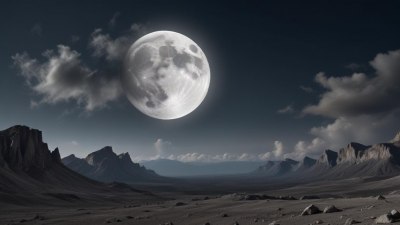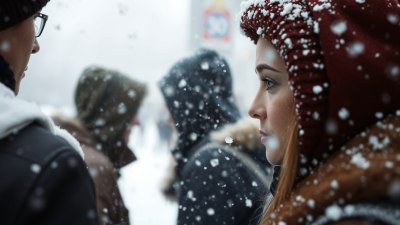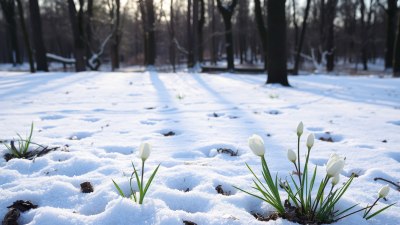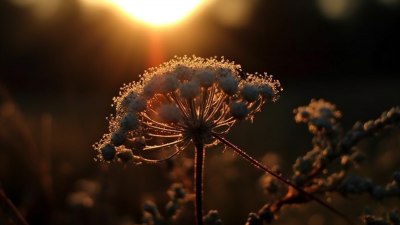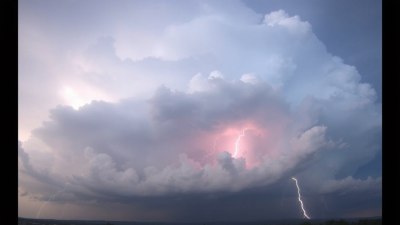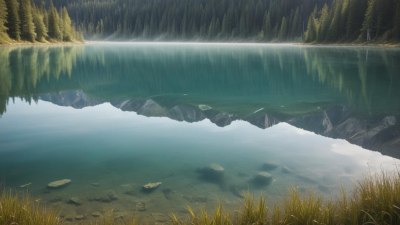How Frost Forms on Clear, Calm Nights
Explore the science behind frost formation on clear, calm nights, including temperature effects, humidity, and atmospheric conditions.
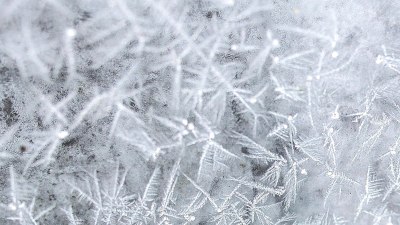
Image by rawpixel-com on Freepik
Frost is a common phenomenon experienced in many regions around the world, especially during the colder months. It appears as a delicate layer of ice crystals on surfaces such as grass, car windows, rooftops, and other exposed objects overnight. While frost may seem simple and purely decorative, its formation is governed by a fascinating interplay of meteorological and physical factors. Understanding how frost forms, particularly on clear and calm nights, involves grasping the roles of temperature, humidity, atmospheric conditions, and surface properties.
The Basic Physics of Frost Formation
Frost forms when water vapor in the air transforms directly into ice crystals on cold surfaces without passing through the liquid water phase. This process is called deposition — the phase change of water vapor turning directly into solid ice. For deposition to occur, two main conditions must be met: the surface temperature must be at or below the freezing point of water (0°C or 32°F), and the air near this surface must be saturated, meaning the relative humidity reaches 100% at the actual temperature.
When these conditions are present, water vapor molecules lose energy as they encounter the cold surface and arrange into ordered, crystalline structures rather than condensing as liquid. This structure is what causes the frost’s characteristic feathery, needle-like appearance observed under magnification.
Why Clear Skies and Calm Winds Aid Frost Formation
Clear and calm nights provide an ideal environment for frost formation. The major contributor to frost on these nights is radiational cooling. During the day, solar energy warms the Earth's surface. At night, when skies are clear, the surface radiates heat back into space unrestricted by clouds. This radiational heat loss causes rapid cooling of the ground and other exposed surfaces.
Cloud cover acts as a blanket, trapping infrared radiation and preventing excessive cooling. Therefore, a cloudy night significantly reduces the chance of frost formation because temperatures near the surface stay relatively warmer.
Calm winds also play a crucial role. On windy nights, air movement mixes warmer air layers from above with the cooler air near the surface, which can moderate the surface temperature and inhibit frost formation. Calm conditions allow a stable, thin layer of cold air to settle directly above surfaces, enabling them to drop to freezing or below.
How Surface Properties Affect Frost Development
The surface itself greatly influences frost nucleation and growth. Different materials conduct heat at various rates, affecting their cooling speed overnight. For instance, metal surfaces cool rapidly and often display frost earlier and more abundantly than areas covered by soil or vegetation, which retain heat longer.
Surface texture also influences frost patterns. Rough or textured objects provide nucleation sites that encourage deposition. Conversely, extremely smooth or heated surfaces might resist frost formation. The presence of moisture on a surface can create an even more favorable environment, serving as seed points for frost crystallization.
The Role of Humidity and Dew Point in Frost Formation
Relative humidity and the dew point are critical concepts when examining frost. Relative humidity refers to the amount of moisture in the air relative to the total amount the air can hold at that temperature. Dew point is the temperature at which air becomes saturated, and water vapor condenses into liquid water.
For frost to develop, the surface temperature generally must fall below both the freezing point and the dew point. If the temperature only dips below freezing but stays above the dew point, the air isn’t saturated, and frost formation is unlikely. Similarly, if the dew point is below freezing but the surface isn’t cold enough, frost won’t form.
On clear, calm nights, the surface cools by radiational loss and may frequently drop below the frost point temperature — the temperature at which frost forms. This frost point is a subset of the dew point concept but specifically refers to below-freezing conditions.
Atmospheric Conditions and Frost Formation
The atmosphere's structure, including pressure and air mass characteristics, also impacts frost. High pressure systems often bring stable conditions that favor clear skies and calm air, ideal for frost. Low-pressure systems tend to bring clouds and wind, hindering frost formation.
Additionally, the altitude of the location influences frost likelihood. Higher elevations typically cool more rapidly and experience frost earlier in the season due to thinner atmosphere and lower heat retention.
Types of Frost Commonly Observed
There are several varieties of frost, each differing in appearance and formation conditions:
- Hoarfrost: Forms from direct deposition on cold, clear nights with high humidity—displaying intricate, feathery ice crystals often seen on vegetation.
- White Frost: Occurs when fog droplets freeze on contact with surfaces, forming a white frost layer that differs slightly from hoarfrost as it involves freezing of liquid water droplets.
- Black Frost: Happens when air is dry and temperature drops below freezing, but no frost crystals form; instead, plants can freeze internally and appear blackened or damaged.
- Rime Frost: Develops during foggy conditions with supercooled water droplets that freeze upon impact, creating a rough, white coating often observed on trees and power lines.
Frost Formation in Urban vs. Rural Environments
Urban environments typically experience fewer frost events than rural areas due to the urban heat island effect. Buildings, pavement, and human activity retain heat, causing nighttime temperatures to be warmer. In contrast, rural areas with open fields and natural landscapes cool more efficiently, promoting frost growth.
Vegetation also plays a role; plants cool through a process called transpiration, releasing moisture that may increase humidity and local frost chances. Conversely, artificial surfaces like roads or parking lots have reduced moisture and may not support frost development as readily.
Implications of Frost for Agriculture and Ecosystems
Frost can have significant positive and negative effects on agriculture and natural ecosystems. For farmers, frost damage may harm crops, especially those sensitive to freezing, leading to economic loss. Some crops, like certain fruit trees, are particularly vulnerable during blooming periods.
On the other hand, frost contributes to natural cycles by controlling pests and influencing plant phenology. Some plants depend on frost periods to trigger dormancy or germination. Ecosystems have adapted to seasonal frost and rely on these periods for balance.
Modern Methods to Predict and Manage Frost Risk
Meteorologists utilize temperature sensors, humidity probes, and remote sensing technology to forecast frost events. Weather stations measure and report data that help farmers implement protective measures such as frost cloths, wind machines, or sprinkler irrigation designed to mitigate frost damage.
Besides technology, understanding the microclimate around fields, such as elevation and wind patterns, assists in anticipating frost impact. Combining these tools empowers better frost risk management to protect crops and infrastructure.
How Frost Differs from Ice and Snow
It is important to differentiate frost from other frozen water phenomena like ice and snow. Frost forms through direct deposition of water vapor onto surfaces without liquid water. Ice typically forms from freezing liquid water after precipitation or surface cooling. Snow forms in the atmosphere when water vapor condenses into ice crystals and falls to the ground.
Unlike snow that falls and accumulates, frost forms locally on surfaces exposed to the atmosphere. Its formation is linked to near-surface temperature and moisture, while ice layers often require liquid water presence.
Summary of Conditions Favoring Frost Formation
To recap, frost formation on clear, calm nights is favored by:
- Radiational cooling causing surfaces to drop below freezing.
- Clear skies enabling efficient heat loss.
- Calm winds preventing mixing of warmer air.
- High relative humidity near surfaces for water vapor saturation.
- Surface characteristics that promote ice crystal nucleation.
- Stable atmospheric high-pressure systems.
These combined factors create the perfect setting for the intricate and fragile beauty of frost to appear, decorating landscapes overnight and reminding us of the subtle complexities in nature’s weather processes.
Understanding these mechanisms not only enriches appreciation of frost’s natural artistry but also equips people in agriculture, horticulture, and meteorology to anticipate and manage its effects effectively.
